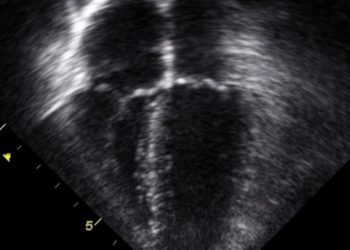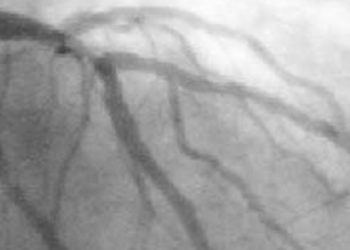Sex differences in procedural outcomes among patients undergoing left atrial appendage occlusion
1. In this large cohort study, women had a significantly higher risk of in-hospital adverse events after undergoing a percutaneous left atrial appendage occlusion when compared to men.
Evidence Rating Level: 2 (Good)
Atrial fibrillation is the most common sustained arrythmia and it is associated with significant morbidity and mortality, including an increased stroke risk. Given that the most important cardiac source of thromboemboli is the left atrial appendage (LAA), a non-pharmacologic approach that involves occlusion of the LAA (LAAO) has emerged as an alternative to anticoagulation. Previous studies of invasive cardiac procedures have demonstrated that women are at a higher risk than men for adverse events, however, this has not been studied in the LAAO procedure. Therefore, this cohort study sough to evaluate sex differences among patients undergoing LAAO. 49 537 patients were included in the study, of which 20 388 (41.3%) were women. The most common indications for LAAO in both women and men was increased thromboembolic risk and history of major bleeding. The primary outcome measured was in-hospital events and length of stay. The study found that rates of any adverse event were higher for women than men (1284 [6.3%] vs 1144 [3.9%]; P < 0.001). Specifically, major bleeding (349 [1.7%] vs 244 [0.8%]; P < 0.001) and pericardial effusion requiring drainage (241 [1.2 %] vs 144 [0.5%]; P < 0.001) were significantly more common for women than men. Length of hospitalization more than 1 day was more frequent in women than men (3273 [16.0%] vs 3355 [11.6 %]; P < 0.001). The secondary outcome measured was differences in postimplant antithrombotic therapy. The study found that women were more likely than men to receive a direct oral anticoagulant only (OR, 1.07; 95% CI, 1.01 – 1.13; P = 0.02) and warfarin only (OR, 1.12; 95% CI, 1.05 – 1.19; P < 0.001). They were less likely to receive clinical-trial recommended combined oral anticoagulant and single antiplatelet therapy (OR, 0.91; 95% CI, 0.87 – 0.95; P < 0.001). This study had a large sample size and accounted for many confounding factors, thus demonstrating good validity. Future studies should focus on identifying the reasons for sex-based differences in outcomes after LAAO and evaluate strategies to reduce this disparity.
Click to read the study in JAMA Cardiology
Image: PD
©2021 2 Minute Medicine, Inc. All rights reserved. No works may be reproduced without expressed written consent from 2 Minute Medicine, Inc. Inquire about licensing here. No article should be construed as medical advice and is not intended as such by the authors or by 2 Minute Medicine, Inc.






